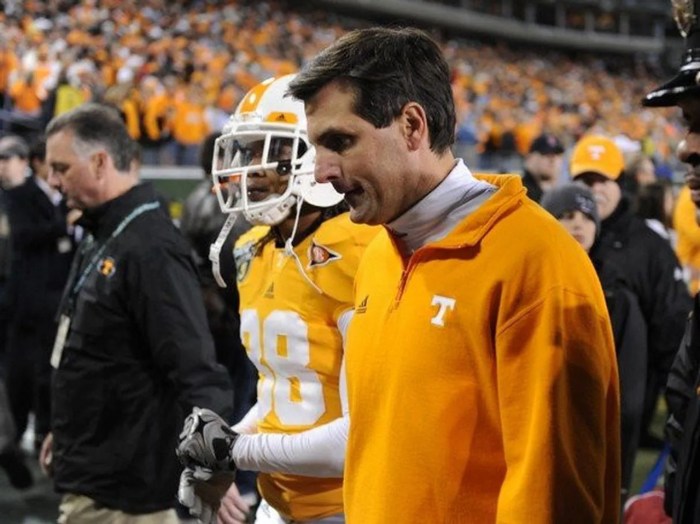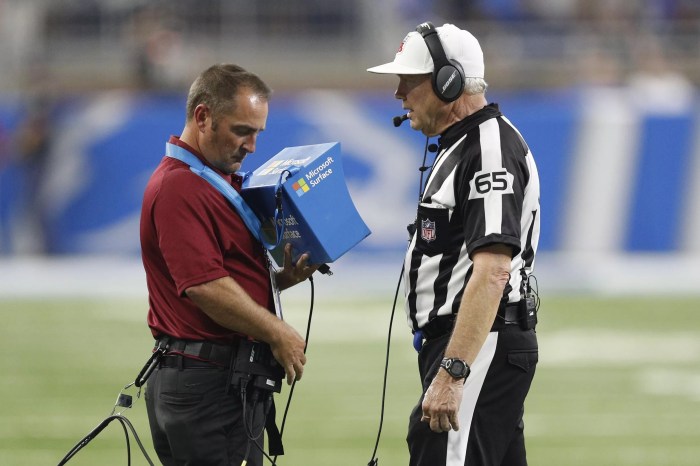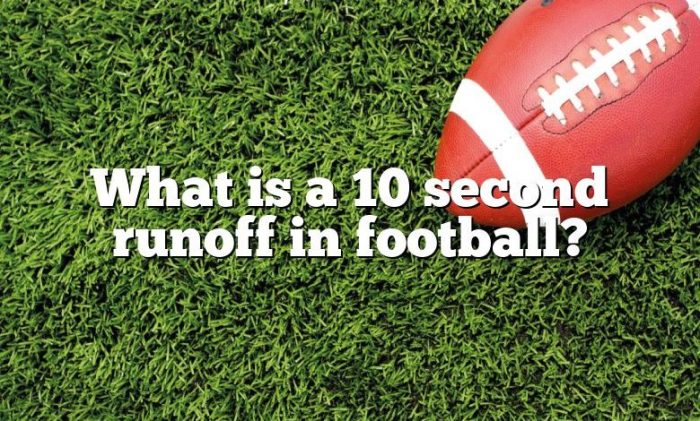Ncaa 10 second runoff rule – The NCAA 10-second runoff rule has transformed basketball, dictating the game’s pace and strategy. From its inception to its present-day implementation, this rule has significantly influenced the sport, leaving an indelible mark on the hardwood.
Officials play a pivotal role in enforcing the rule, ensuring that players adhere to the time limit. This rule has faced challenges and controversies, but its impact on gameplay remains undeniable.
Definition of the NCAA 10-Second Runoff Rule

The NCAA 10-Second Runoff Rule is a regulation in college basketball that aims to prevent teams from intentionally stalling or delaying the game to gain an advantage. It dictates that if a team does not advance the ball past the half-court line within 10 seconds after gaining possession, the opposing team is awarded the ball.
The purpose of the rule is to maintain the pace of play and prevent teams from using excessive stalling tactics to control the tempo of the game. It ensures that both teams have a fair opportunity to score and keeps the game entertaining for spectators.
Situations Where the Rule is Applied
- When a team gains possession of the ball and fails to advance it past the half-court line within 10 seconds.
- When a team receives the ball after a jump ball and does not advance it past the half-court line within 10 seconds.
- When a team takes a timeout and does not advance the ball past the half-court line within 10 seconds after the timeout ends.
Implementation and Enforcement of the Rule: Ncaa 10 Second Runoff Rule

The implementation and enforcement of the NCAA 10-second runoff rule involve specific actions by officials to ensure its proper execution during games.
In the NCAA, the 10-second runoff rule is a crucial aspect of the game. It adds excitement and strategy, just like the USPS Exam 421 Study Guide helps you ace the USPS exam. This rule forces teams to make quick decisions, whether to run or pass, and adds a thrilling element to the end of each half.
The officials have the primary responsibility of monitoring the time remaining on the game clock and observing the actions of the team in possession of the ball. If the team fails to advance the ball beyond the line of scrimmage within 10 seconds, the officials will stop the clock and award possession to the opposing team.
Challenges and Controversies
The implementation of the 10-second runoff rule has faced some challenges and controversies:
- Timekeeping Errors:Officials must accurately track the 10-second time frame, and any errors in timekeeping can lead to disputes and protests.
- Subjective Interpretations:Determining whether the ball has been advanced beyond the line of scrimmage can be subjective, leading to disagreements between officials and coaches.
- Impact on Offensive Strategies:The rule can restrict offensive play-calling, as teams may be hesitant to risk penalties by attempting complex or time-consuming plays.
Impact on Game Play

The 10-second runoff rule has significantly altered the pace and strategy of basketball games. By limiting the amount of time teams have to advance the ball, the rule has sped up the game and forced teams to be more aggressive on offense.
Prior to the implementation of the rule, teams could hold the ball for extended periods of time, slowing down the game and making it more difficult for opponents to score. This often led to stagnant, low-scoring games. The 10-second runoff rule has eliminated this tactic, forcing teams to move the ball up the court more quickly.
Faster Pace
The 10-second runoff rule has led to a faster pace of play in basketball games. According to statistics from the NCAA, the average number of possessions per game has increased by 5% since the rule was implemented. This increase in possessions has led to more scoring opportunities and a more exciting game for fans.
More Aggressive Offense
The 10-second runoff rule has also forced teams to be more aggressive on offense. In order to avoid a violation, teams must now move the ball up the court quickly and look for scoring opportunities. This has led to an increase in the number of shots taken per game and a decrease in the number of turnovers.
Historical Evolution of the Rule
The 10-second runoff rule has undergone several revisions since its inception. Initially introduced in the 1950s, the rule was designed to prevent teams from holding the ball indefinitely and running out the clock. Over the years, the rule has been modified to improve its effectiveness and address various gameplay situations.
Initial Implementation, Ncaa 10 second runoff rule
The original 10-second runoff rule was implemented in 1954. It required the offensive team to advance the ball past the line of scrimmage within 10 seconds of taking possession. If they failed to do so, the possession would end, and the other team would take over.
Revisions and Modifications
Over the years, the rule has undergone several revisions to address specific situations and improve gameplay. In 1973, the rule was modified to allow the offensive team to spike the ball to stop the clock if they were facing a loss of down.
In 1999, the rule was further revised to give the offensive team an additional 5 seconds to run a play if they were facing a fourth down and less than 10 yards to go.
Current Rule
The current 10-second runoff rule is a combination of the original rule and its subsequent revisions. It requires the offensive team to advance the ball past the line of scrimmage within 10 seconds of taking possession. If they fail to do so, the possession will end, and the other team will take over.
However, if the offensive team is facing a fourth down and less than 10 yards to go, they are given an additional 5 seconds to run a play.
Comparison to Other Sports
The NCAA 10-second runoff rule shares similarities with rules in other sports, but also has distinct features.
In soccer, there is a similar concept called the “six-second rule.” When a player is awarded a free kick, they have six seconds to take the kick. If they fail to do so, the kick is awarded to the opposing team.
In hockey, there is a “10-second rule” that applies to face-offs. If a player fails to take the puck within 10 seconds, the face-off is reset.
Similarities
- All three rules are designed to keep the game moving and prevent teams from stalling.
- All three rules give the opposing team an advantage if the rule is violated.
Differences
- The NCAA 10-second runoff rule is unique in that it applies to all dead-ball situations, not just free kicks or face-offs.
- The NCAA 10-second runoff rule is also more lenient than the six-second rule in soccer or the 10-second rule in hockey. In soccer and hockey, the opposing team is awarded possession if the rule is violated. In the NCAA, the opposing team is only awarded a free throw.
Future Considerations

As the NCAA 10-second runoff rule continues to evolve, it’s important to consider potential future changes or modifications. These modifications could have significant implications for the game of basketball.
One potential change is the implementation of a “hard” 10-second rule, which would eliminate the current “grace period” that allows players an extra second to advance the ball. This would increase the pressure on teams to make quick decisions and could lead to more turnovers.
Potential Implications
The implementation of a “hard” 10-second rule could have several implications for the game of basketball:
- Increased turnovers: Teams would have less time to advance the ball, leading to more turnovers and potentially slowing down the pace of the game.
- Greater emphasis on ball movement: Teams would need to make quicker decisions and move the ball more efficiently to avoid turnovers.
- Enhanced defensive strategies: Defenders would have an advantage, as they could pressure the ball handler more aggressively knowing that the player has less time to make a decision.
FAQ Overview
What is the purpose of the NCAA 10-second runoff rule?
To prevent players from holding the ball indefinitely and stalling the game.
How is the rule enforced?
Officials start a 10-second count when a player gains possession of the ball.
What happens if a player violates the rule?
The ball is awarded to the opposing team.